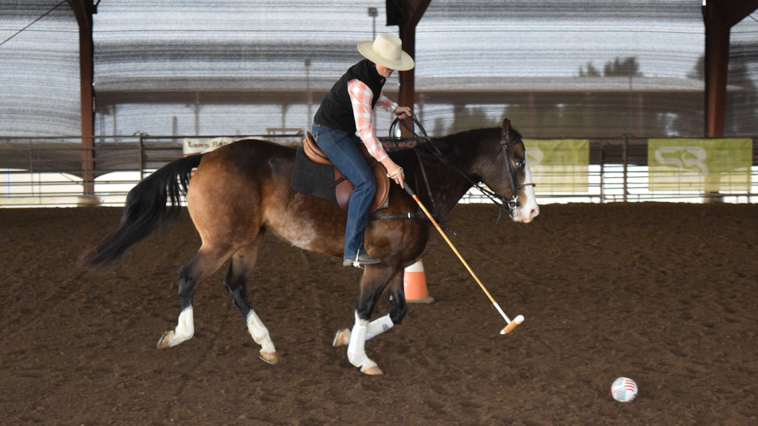


Polo -training skill drills help reinforce purpose, performance and pleasure—even if you never intend to compete in the sport.
Article by Kalley Krickeberg
Cross-training is one of the most important things we can do for our horse’s mental and physical well-being, and nothing provides better cross-training than polo. It’s a hidden gem in the horse world! Normally thought of as a rough and tumble, high-energy, fast-paced game, polo provides immense benefits for a horse through just training for the game.
Pre-Requisites
To get started, you don’t need any special tack or equipment. All you need is a lightweight broom and a beach ball, and you’re ready to begin. The horse should have a basic understanding of neck reining and moving away from leg pressure.
First thing’s first, we must help the horse learn that the broom or mallet is nothing to worry about. We also need to provide the horse with an opportunity to see and hear the ball being hit and rolling across the ground. Those things can concern the horse at first, so make sure you work on desensitization first.
When desensitizing the horse to the broom or mallet, it is important to think about it in three ways. First, work on the “sight” of the broom or mallet swinging all around, including under the neck and belly; the horse should understand that no matter where they see it, it is not a threat. Next is acclimating the sound of the mallet/broom hitting the ball, again from both sides of the horse. And finally, work on the feel of the mallet or broom touching the horse, all over.
##
This is an excerpt from the full article—get the whole story in the Spring 2024 Chrome magazine, which is sent to all current APHA members. Not a member? Join or renew at apha.com/join
SHARE THIS